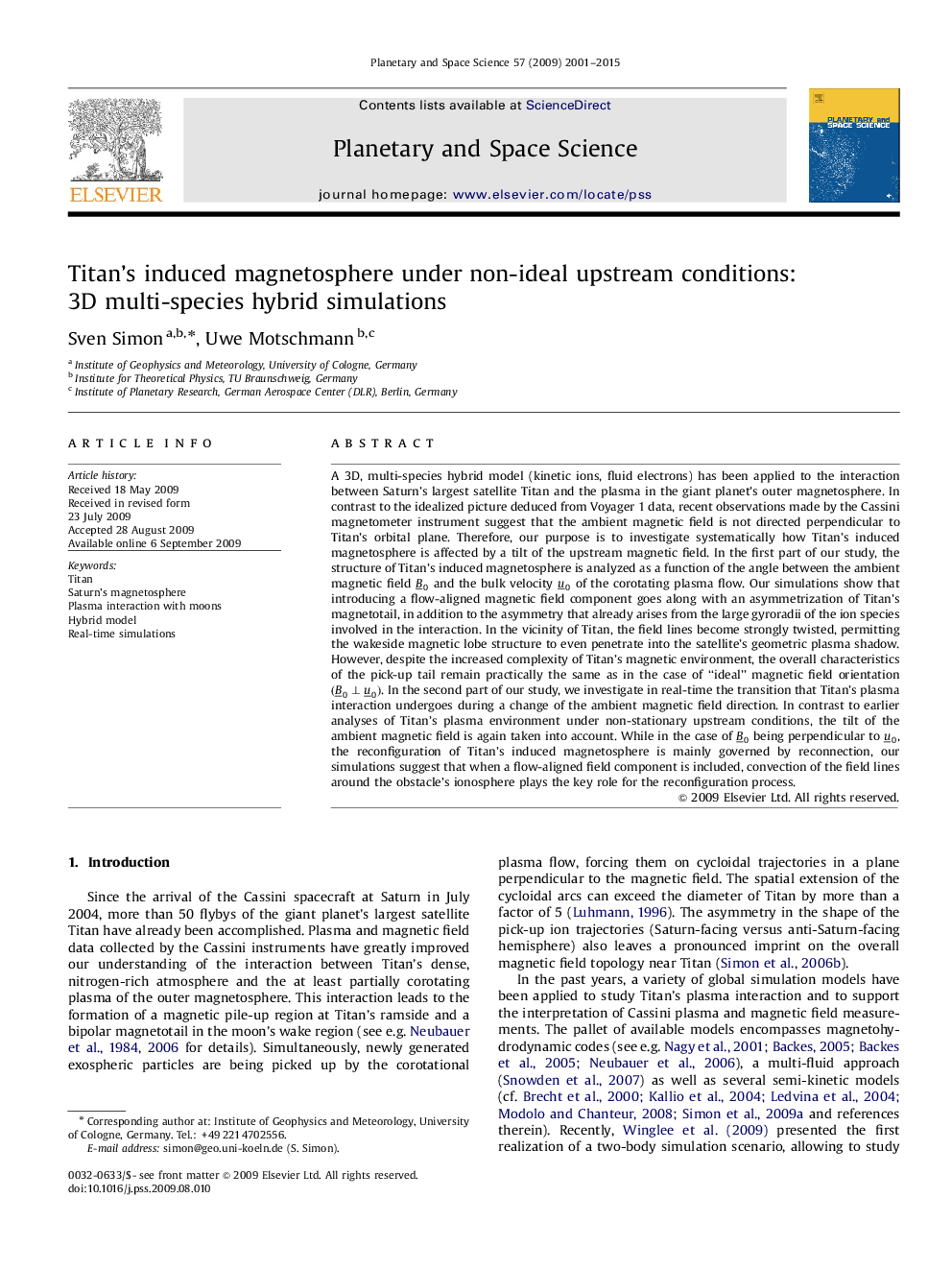| Article ID | Journal | Published Year | Pages | File Type |
|---|---|---|---|---|
| 1781955 | Planetary and Space Science | 2015 | 15 Pages |
A 3D, multi-species hybrid model (kinetic ions, fluid electrons) has been applied to the interaction between Saturn's largest satellite Titan and the plasma in the giant planet's outer magnetosphere. In contrast to the idealized picture deduced from Voyager 1 data, recent observations made by the Cassini magnetometer instrument suggest that the ambient magnetic field is not directed perpendicular to Titan's orbital plane. Therefore, our purpose is to investigate systematically how Titan's induced magnetosphere is affected by a tilt of the upstream magnetic field. In the first part of our study, the structure of Titan's induced magnetosphere is analyzed as a function of the angle between the ambient magnetic field B̲0 and the bulk velocity u̲0 of the corotating plasma flow. Our simulations show that introducing a flow-aligned magnetic field component goes along with an asymmetrization of Titan's magnetotail, in addition to the asymmetry that already arises from the large gyroradii of the ion species involved in the interaction. In the vicinity of Titan, the field lines become strongly twisted, permitting the wakeside magnetic lobe structure to even penetrate into the satellite's geometric plasma shadow. However, despite the increased complexity of Titan's magnetic environment, the overall characteristics of the pick-up tail remain practically the same as in the case of “ideal” magnetic field orientation (B̲0⊥u̲0). In the second part of our study, we investigate in real-time the transition that Titan's plasma interaction undergoes during a change of the ambient magnetic field direction. In contrast to earlier analyses of Titan's plasma environment under non-stationary upstream conditions, the tilt of the ambient magnetic field is again taken into account. While in the case of B̲0 being perpendicular to u̲0, the reconfiguration of Titan's induced magnetosphere is mainly governed by reconnection, our simulations suggest that when a flow-aligned field component is included, convection of the field lines around the obstacle's ionosphere plays the key role for the reconfiguration process.
